Nine things Leicester is doing right
The Cycling Embassy recently visited Leicester for our AGM. In addition to our formal business and discussions, we had plenty of time to get out on our bikes and tour the city, kindly shown around by the Leicester Cycling Campaign Group.
Leicester isn't brilliant for cycling. There are many roads and streets where there cycling infrastructure is poor or non-existent, and where better stuff does exist, it is discontinuous, or of a lower quality at junctions.
But the impression the Embassy got from our short weekend visit was of a city that is now making a start, trying to reverse decades of neglect and under-investment in cycling. The city is implementing many changes that other British towns and cities could implement quite easily too.
Here are some of the things that Leicester is getting right.
1) Being bold
The city has recently removed a flyover that passed over the Belgrave roundabout, near the city centre.
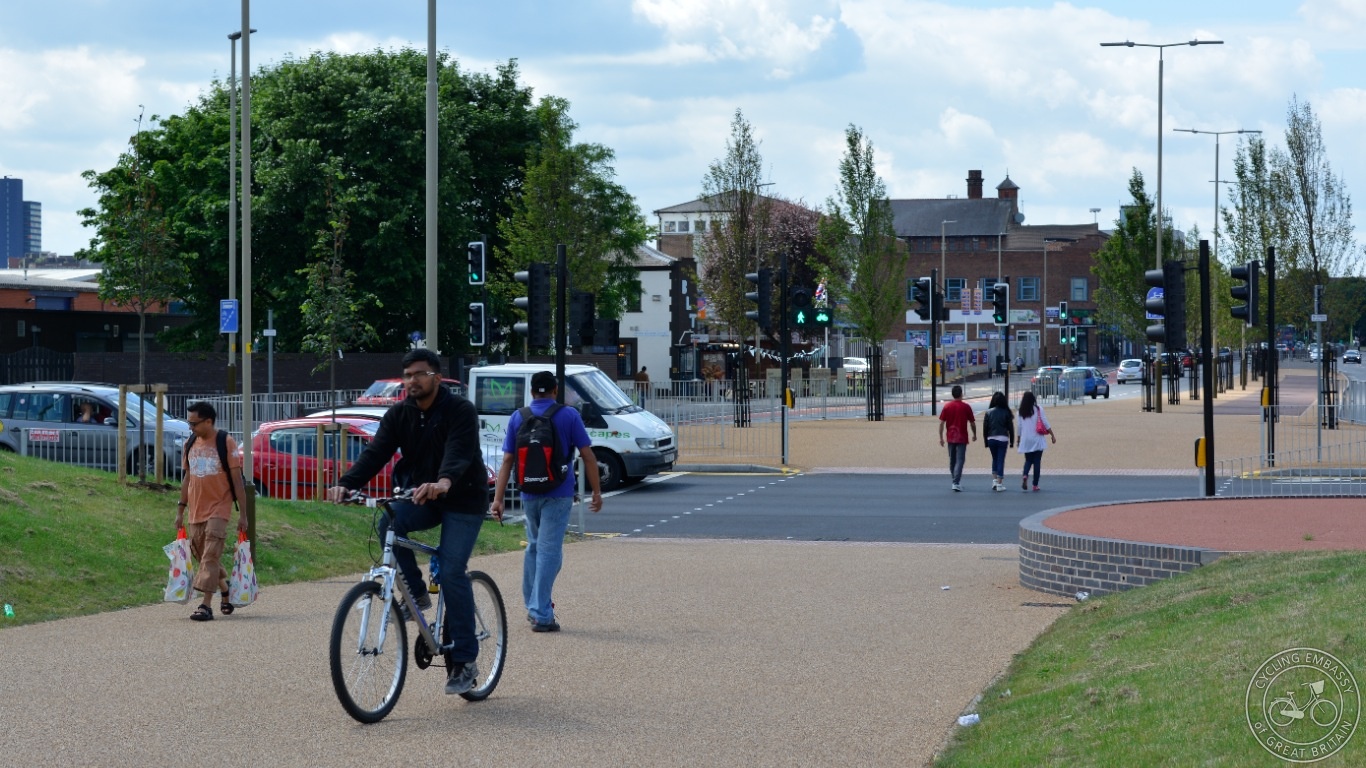
The flyover (which you can still 'drive over' on Google Streetview) has been replaced by a shared-use path, running directly across the centre of the roundabout.
This isn't a particularly brilliant example of cycling infrastructure. The shared use paths on either side of the roundabout are too narrow, and involves the inconvenience of waiting to get back to the side of the road - and also there's no cycling infrastructure around the perimeter of the roundabout itself.
But the flyover removal itself demonstrates that cities can take bold steps to improve their environments for walking and cycling, removing motor traffic capacity. Leicester has also replaced a car park near the city centre with space for people.
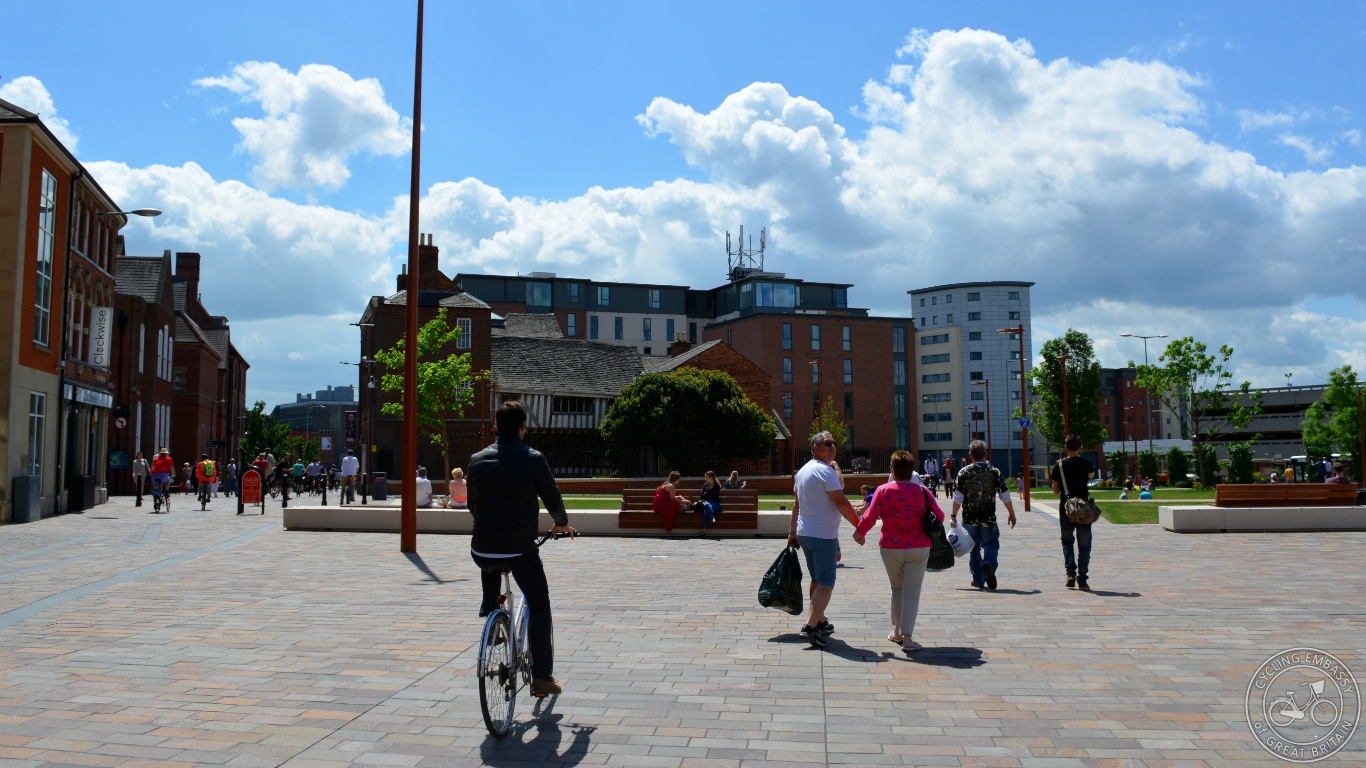
2) Experimenting
Leicester is willing to experiment, by trialling the closure of motor traffic lanes with cones.
A new cycleway on Newarke Street - which has replaced one of three lanes of motor traffic - was built following a temporary closure of that lane, to examine the effects on motor traffic flow.

A similar (apparently 'controversial') experiment has been performed on the nearby Welford Road, which ended earlier this year - 'to see what impact it would have on traffic if the lane were to be permanently turned into an extended footpath and cycleway'.
3) Getting kerbs right
Unlike London, which seems to be making a mess of how to properly construct a cycleway that allows people to cycle right next to the edge of a kerb, and to traverse it with a low a risk of crashing, Leicester seems to have mastered the forgiving kerb.
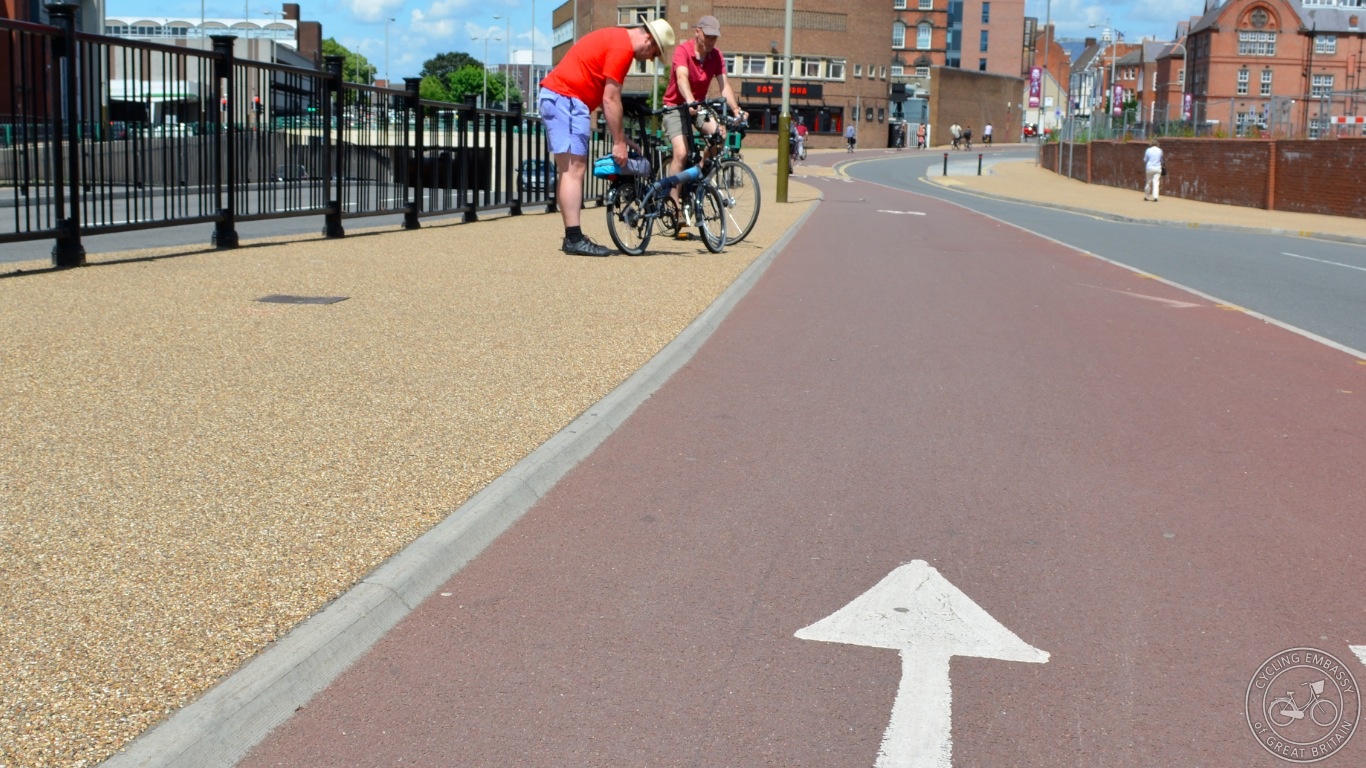
I tested this with a small-wheeled Brompton - and could quite happily move from footway to cycleway (and back again!) even at quite a shallow angle, with no risk of crashing.
4) Consistent colour for cycling infrastructure
Across Britain, cycle lanes (and cycling infrastructure more generally) is a melange of colours - greens, blues, bright red. There is no consistent colour across the country for something that is recognisably for cycling.
Leicester, on the other hand, has settled on the dark red tarmac that is familiar to anyone who has seen Dutch cycling infrastructure. It's even used to demarcate cycling from 'footways' on streets that are pedestrianised, or have low traffic levels, in the city centre.
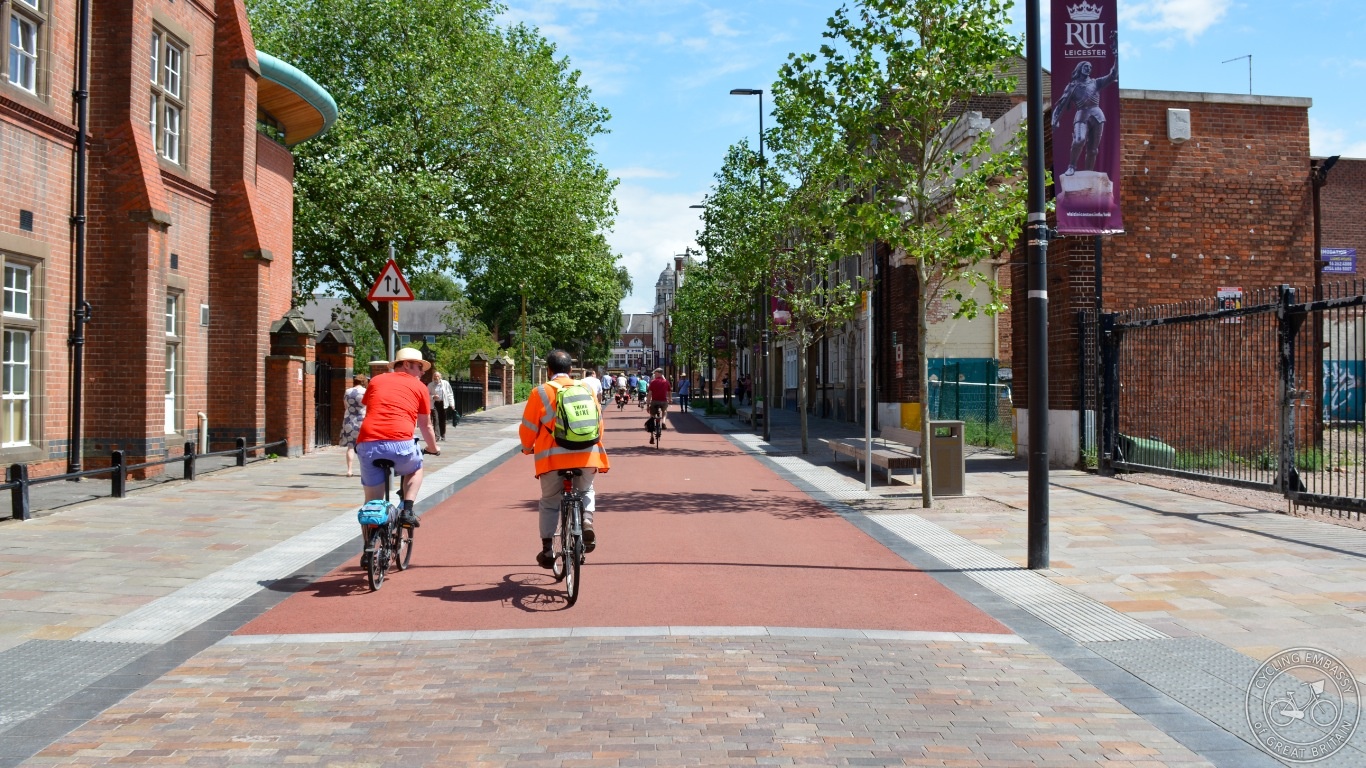
5) Reallocating road space quickly and cheaply, with temporary infrastructure
It's not as good as well-designed, permanent cycling infrastructure, but roads can be made much more attractive for cycling on with cheap, rough-and-ready interventions like these wands we saw in Leicester.

6) Allowing cycling in pedestrianised areas
Cycling is allowed on every street in Leicester's (large) pedestrianised city centre, at all times - this is an area that has had through motor-traffic removed.
Many of these streets are too busy during the day to function as sensible through-routes for cycling, and with decent parallel provision people would naturally choose to avoid many of these streets by bike, except if they have to visit them for a specific purpose.
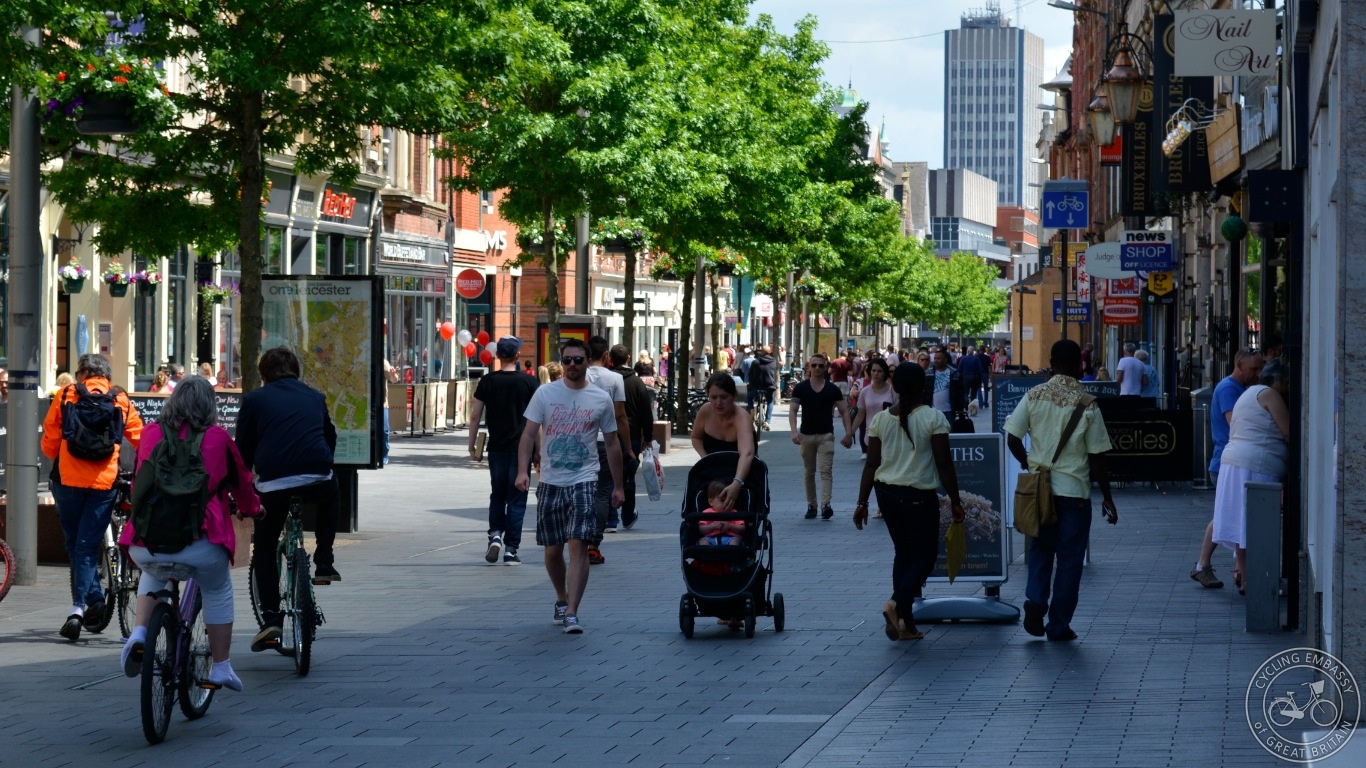
Nevertheless this is enlightened policy, and an interesting living experiment into the practical effects of allowing cycling on these kinds of streets.
7) Filtering out through traffic from access streets
Leicester has many examples of streets that are access-only for motor traffic, while still functioning as through routes for walking and cycling. Some of these date back to the 1980s, apparently to stop kerb-crawling.

While other examples are more recent.
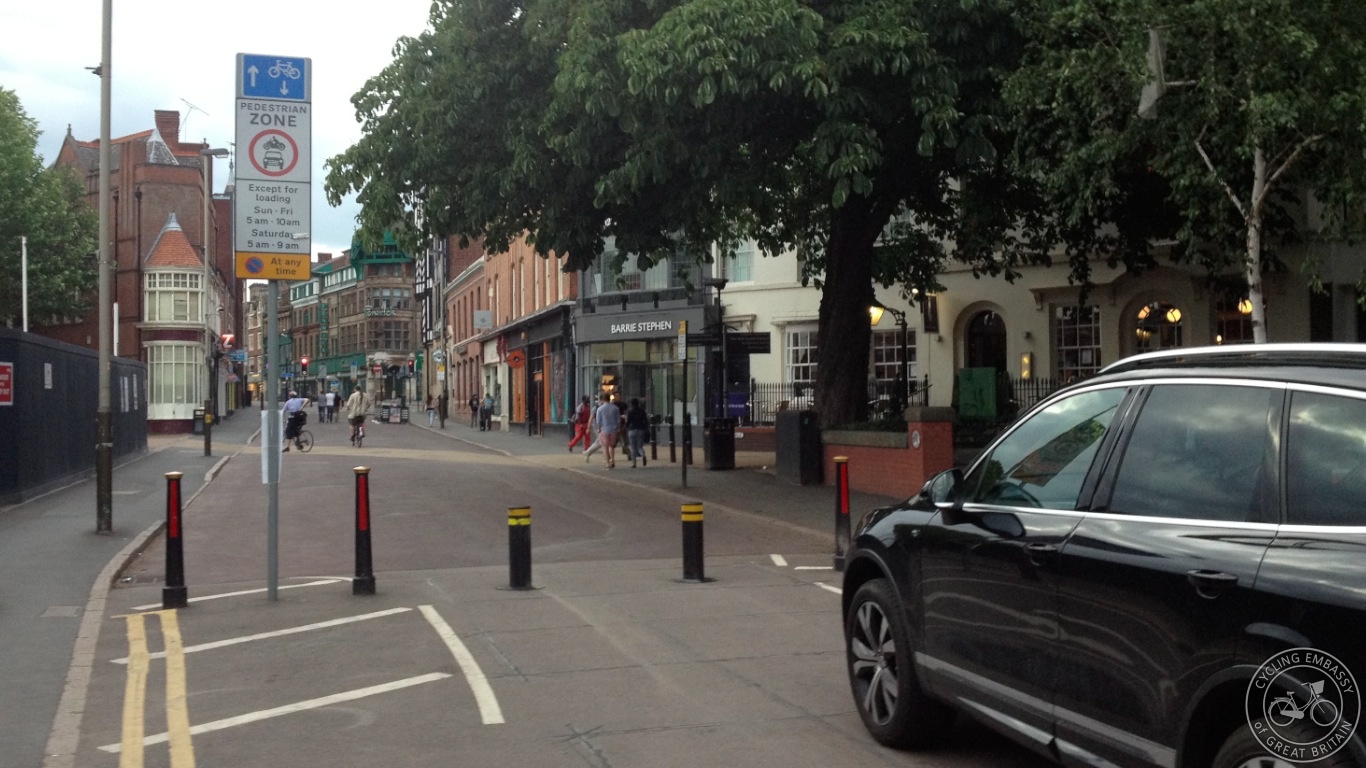
8) Using one-way streets creatively
Finally, Leicester uses one-way arrangements on streets in constructive ways - to prevent them being used as through-routes for motor traffic. Granby Street in the city centre has one-way flow for motor traffic (with two-way flow for cycling) but in opposed directions, meaning it is impossible to drive down the entire street.
Although the street is still open for access for drivers, allowing them to park on the street, this means there is no through traffic, and consequently the street is relatively quiet, safe and calm to cycle on.
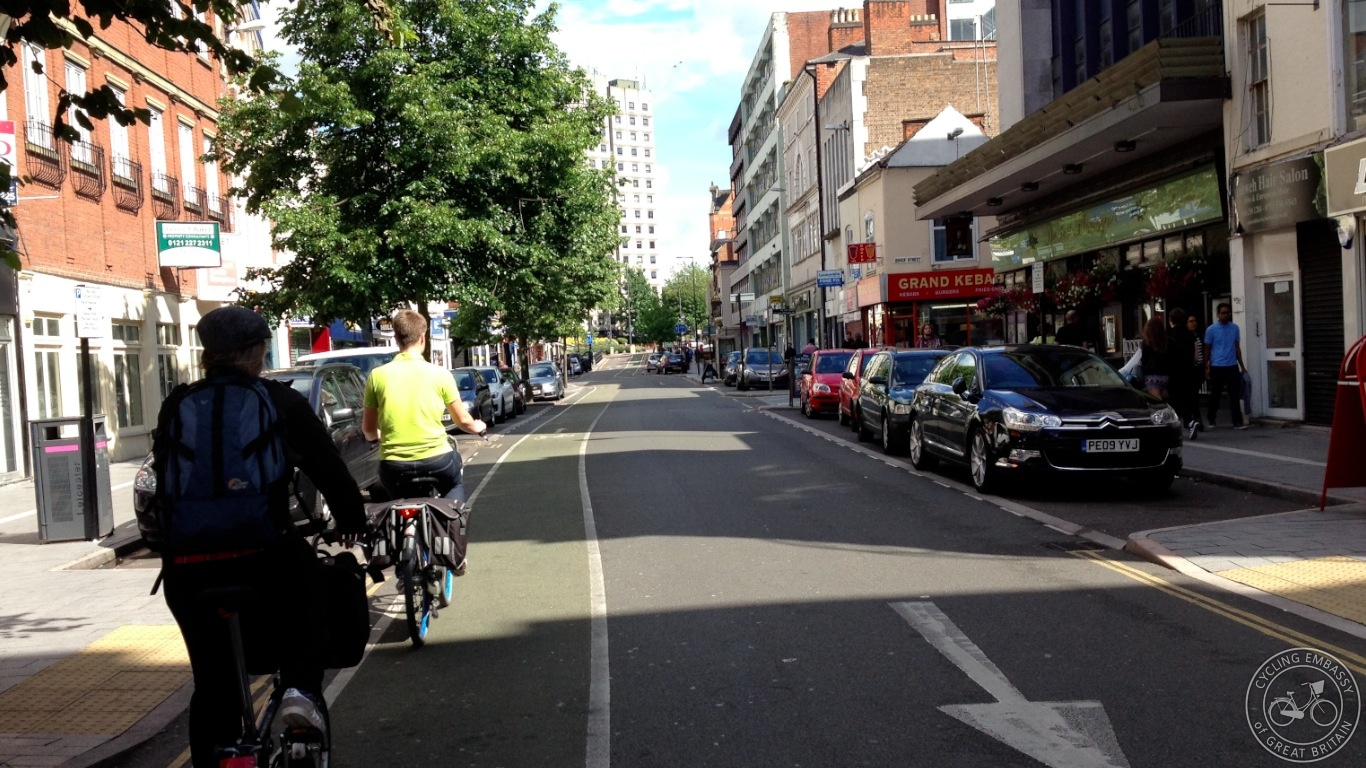
9) Don't give up
Don't give up - even though Leicester didn't get the Cycle City Ambition Grant money it bid for, it's decided to go ahead and implement its plans anyway as funding allows. And it's not resting on its laurels - work continues to keep tackling the problematic roads and filling in the gaps in its network ...
Many of these kinds of measures could be transferred easily to other towns and cities across Britain. They are either cheap and easy ways of making cycling more attractive, or they involve basic policy that should be got right when cycling infrastructure is being built, at no extra cost (for instance, the colour of cycling infrastructure, or the kerbing).
To repeat, Leicester is no cycling mecca - there is an awful lot wrong in the city that needs to be put right, and that will take time. But it is showing what can be done with a bit vision, inspiration, boldness - and just basic good policy.

Comments
Zandranna
19 July, 2015 - 15:12
Permalink
Regarding No 6:What
Regarding No 6:
What disappoints me in the UK is that even when shopping areas are pedestrianised they are also closed to cycling. I hate leaving my trike on the outside of the ped areas because of theft and it's far too hard to get off and push my trike as one is expected to if you want to take it with you. Well done Leicester for not falling into that one.
I used to live in Hastings in East Sussex and when they pedestrianised instead of simply putting a lovely wide cycling strip through the centre they banned bikes. I then moved to Christchurch which main large town is Bournemouth. Once again the shopping area was pedestrianised and no cycling allowed.
Christchurch town has a single two way shared cycle/ped pavement which once it hits the town centre it actually guides you into a four lane duel carriage way and into on coming traffic. Of course there is the obigatory sign "cyclists dismount". How they expect people to dismount from trikes and other disability type bikes I just don't know.
Christchurch is only 4.5 miles from me, which I can cycle very easily, but because it's so much hassle to get off and walk my trike to the nearest bike parking I honestly don't bother to go into town but a couple of times a year. I now do all my shopping for fun things on line, or ask my Daughter to get them for me when she goes into town.
Then they complain that small town high streets are dying.
Luv 2 Cycle